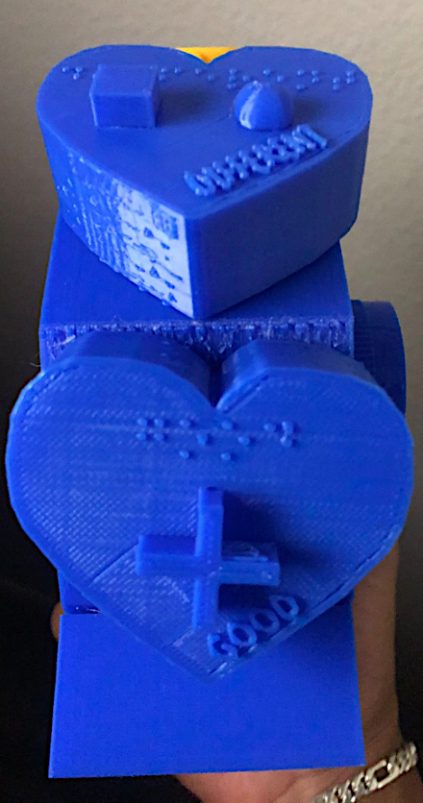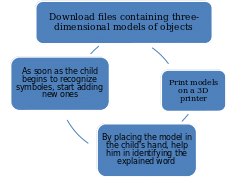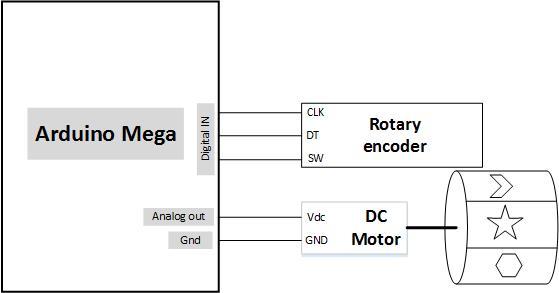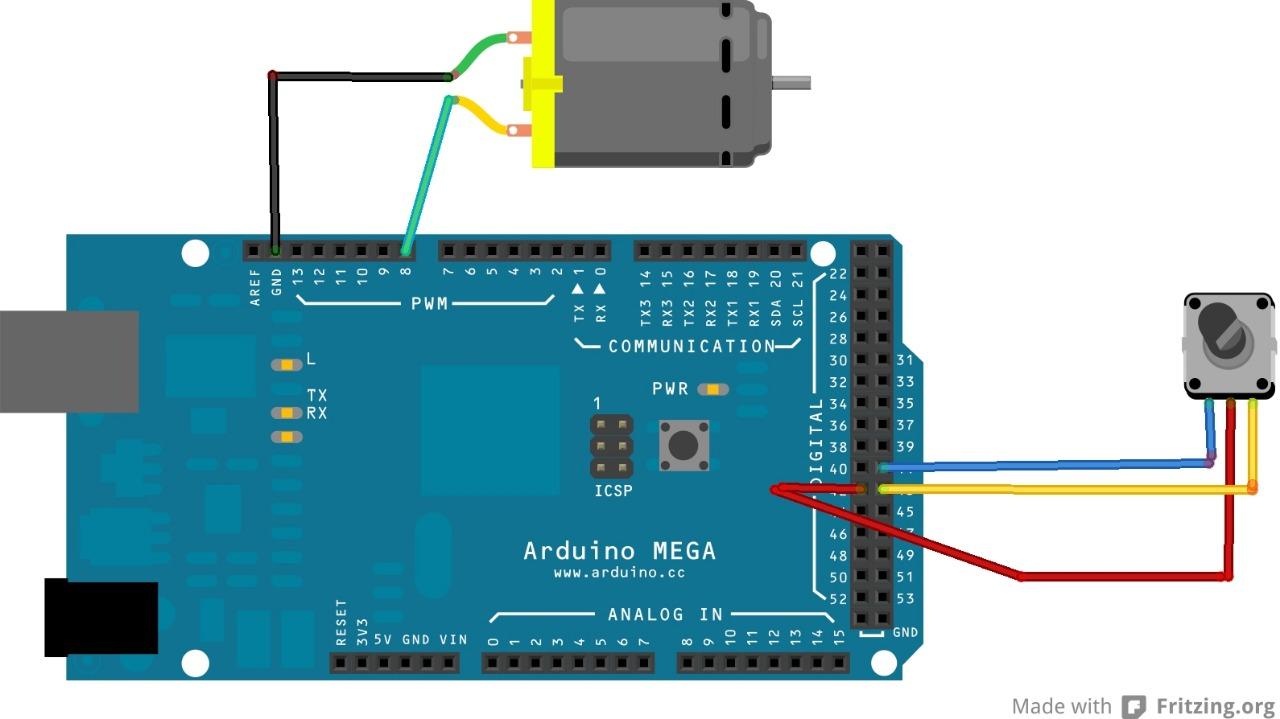Abstract
The essence of the project is to create a set of three-dimensional symbols to represent words in the Universal Core vocabulary. These tactual symbols help deaf-blind people with developmental disabilities, and complex communication needs to communicate. To use this project in training, one will need characters printed on a 3D printer. The interlocutor must look at the printed words engraved on the symbol and identify the characteristics of the symbol to interpret the intent of the communication. The project’s importance is justified in the context of the project’s impact on public health and safety. The possibility of implementing the project has been substantiated from the perspective of global, social, and environmental factors. The 3D shapes produced during the project were proven to be a functional and helpful tool for teachers in the classroom. The use of these models would enable people with varying communication abilities to communicate with one another through symbolic communication. References to the sources used were provided, as well as the theoretical prerequisites for the creation of the project. Recommendations for future work on the topic are indicated.
Keywords: learning strategies, language system, 3D models, developmental disabilities, symbols.
Design Report
The Centre for Literacy and Disability Studies created a newly developed set of 3D tactile symbols. Using these symbols will help to promote language learning and expressive communication, which are the subjects of current research and practice. To the greatest extent, this project aims to deaf-blind and non-speaking people who need to develop a language system. The new type of tactile symbol is characterized by ease of memorization and ease of perception, distinguishing it from previous models.
Background
A core vocabulary is a limited set of simple words used widely and through contexts in any language. The act of establishing meaning among entities or groups through mutually understood signs, symbols, and semiotic conventions is known as communication. Even with such a small set of words, normal communication can be ensured. Symbols used include adjectives, adverbs, verbs, nouns, prepositions, and pronouns. Since communication problems predominantly arise in childhood, they are made taking into account children’s needs: they differ significantly from each other in shape, color, and texture to attract children’s attention.
Design Specification
Many different circumstances were taken into account when creating these models. Among other things, it was necessary to find out how functional the finished project would be. Namely, the research being conducted was supposed to answer whether the project will meet the community’s environmental, economic, and social needs. However, for all the parameters of interest, positive results were obtained, which gives the right to declare the possibility of using the project for educational purposes.
Application of the Project for the Needs of Deaf-Blind People
Engineering design project provides solutions that meet the specified needs of people with developmental disabilities. Printed tactual symbols have their benefits such as low cost, ability to resize symbols, and easy model reproducibility. The tactile features of the 3D models representing the Universal Core vocabulary were designed to help students learn to differentiate between symbols made of the same material. To assist visually disabled project members, all models have the word indicated in braille.
The Role of the Project in Creating an Inclusive Environment
The project aims to provide an opportunity for inclusive interaction of people with different communication abilities through symbolic communication. This interaction can be achieved by adding core vocabulary layouts to classrooms. Such designs, however, should be large so that visually impaired students do not have problems seeing the materials on display. Until American schools use additional communication tools, such as the analyzed set of symbols, students with cognitive disabilities will not be able to achieve academic results at the level of their classmates (Erickson et al., 2019). Overcoming the difficulties of teaching children with disabilities can only be done by creating an inclusive and friendly environment.
Using the Knowledge in the Learning Process
Start with three simple terms (GO, NOT, LIKE); even three symbols provide limitless opportunities for teaching and learning through partners and contexts. During a conversation, it is necessary to point to the symbols corresponding to the pronounced words. Not every word will be available; the speaker needs to indicate the available terms. The effectiveness of memorizing words is guaranteed through contingent reinforcement. This approach has advantages for both cognitive and linguistic development as it helps in memorizing words. Teachers in their schooling activities can use a similar approach.
Design
Once completed, the project will consist of six wheels with 36 different shapes and symbols. The use of the symbol printed on the printer took place following the algorithm outlined in the diagram (Figure 2). The resulting model is shown in the photo (Figure 1). Among the components of the models, there are Arduino Mega, Rotary Encoder, DC Motor, and Esp32, as well as some additional elements such as wires and buttons. The total cost of the items used was $ 601.55. A significant part of the budget went to purchase the 3D printer itself and the 3D printer Filament.
A DC Motor is installed on one side of this wheel and on the other side is the rotary encoder installed. The design of the engine and the encoder is demonstrated in the block diagram (Figure 3) and circuit (Figure 4). Each wheel will have six shapes glued on the wheel, and an empty surface (Heptagon wheel). These forms are taken from the UNC project. So far, only one wheel has been 3D printed.

Note. Each tactile symbol is printed with a form, texture, and color that corresponds to the word category.

Note. A simplified version of the algorithm is presented; some steps are deliberately not indicated.


Problems Encountered
The project was designed to work with stepper motors to have more accurate readings. The stepper motor did not move manually, so the switch to DC motors was required. It was necessary to write a code to move the wheel and stop on a particular shape. The written code worked without problems; therefore, the difficulties encountered were resolved. In the course of printing models, in addition to the indicated problem, no other difficulties were found. Still, problems may arise already in the course of the teacher’s use of structures. However, at this stage of the project, it still seems that problems can be avoided since the results of colleagues’ research demonstrate the effectiveness and convenience of using such models for educational purposes.
Results and Discussion
The wheel and six forms of tactical symbols have been successfully 3D printed. A DC motor was installed on the wheel side and an encoder on the other side. The model created on the printer functions without any major defects. Despite the small amount of experience in using a 3D printer, following the instructions, it was possible to reproduce the model without any problems. Children interacted productively with the model; its shape, texture, and size did not cause children rejection. Accordingly, in the future, it can be assumed that children will also actively interact with models in the classroom at school.
Conclusion
In the course of work on the project, it was possible to create a 3D model that can be used to teach children. The 3D shapes created during the project were proven to be a functional and helpful tool for teachers in the classroom. The use of these models will provide inclusive interaction of people with different communication abilities through symbolic communication. The next goal will be to replicate this concept using the remaining symbols and construct an application that will use the DC motors to turn the wheel. The approximate cost of materials was indicated for those researchers who also want to apply the models in educational activities. The project has been proven to meet social, health, and educational needs.
References
Erickson, K., Geist, L., Hatch, P., & Quick, N. (2019). The Universal Core Vocabulary [Technical Report]. Chapel Hill, NC: Center for Literacy & Disability Studies, University of North Carolina at Chapel Hill.